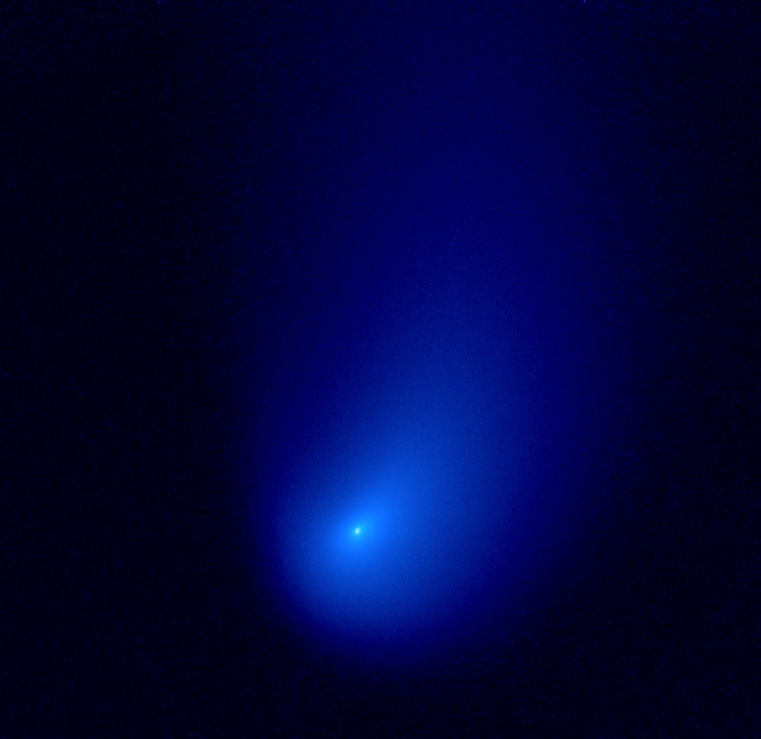Comet ISON made a close encounter with Mars at a distance of 0.07 AU on October 1, 2013. This record won’t last long. Another newly discovered comet, C/Siding Spring (formally designated as C/2013 A1) will take a near miss on October 19, 2014 with Mars at a distance of 0.000953 AU = 143,000 km. That distance is about 1/3 of the average distance between the Earth and the Moon, or within 4 times the distances of geostationary satellites! Mars will essentially pass through the coma and tail of Siding Spring.
Similar to ISON, Siding Spring is a dynamically new comet, visiting the inner solar system for the first time after its formation, carrying unique information about the formation environment of our planetary system. The best way to study comets is to get close, like what’s been done by various NASA’s cometary missions, such as Deep Impact, EPOXI, Stardust, Starudst-NExT, and the ongoing ESA’s Rosetta. However, all those mission targets are comets that have been circling the Sun within Jupiter for at least thousands of times, and are not as fresh samples as ISON and Siding Spring. It is extremely hard to build such a mission to a dynamically new comet, just because they only come in near us once and never return, and we don’t have enough time to precisely determine their orbit, design and build spacecraft, and fly it. Now, made possible by nature is the Mars flyby of Siding Spring, and we have many instruments already there. Siding Spring is as unique as ISON. It’s been some good years for cometary science!
Of course, the pass of Mars through Siding Spring’s coma and tail means that all the Mars orbiters need to survive the bombardment of cometary dust. Even a dust particle of 0.1 mm in size will damage the spacecraft at a relative speed of 56 km/s during the encounter.
Hubble Space Telescope Observations
We used the Wide Field Camera 3 of the Hubble Space Telescope to observed Siding Spring in late October, 2013. The purposes are to characterize its coma, and hopefully get some ideas about how big the nucleus is. This information will both provide us the baseline knowledge of this comet, and help with assessing how much risk Mars orbiters will have during the encounter. We are still in the process of processing and analyzing these images, and plan for more observations in the near future.

Comet C/Siding Spring as seen by Hubble on October 29, 2013 through the F606W filter. North is up. Image Credit: NASA/ESA
Read More about Siding Spring
- Wikipedia Siding Spring page
- Yoshida’s website, Siding Spring page
- Minor Planet Center, Siding Spring database